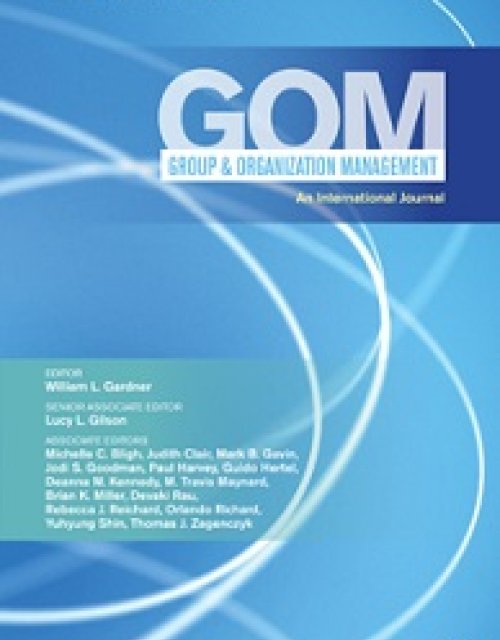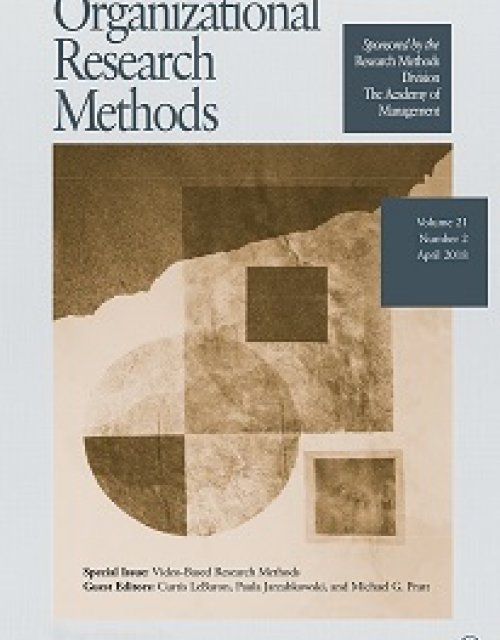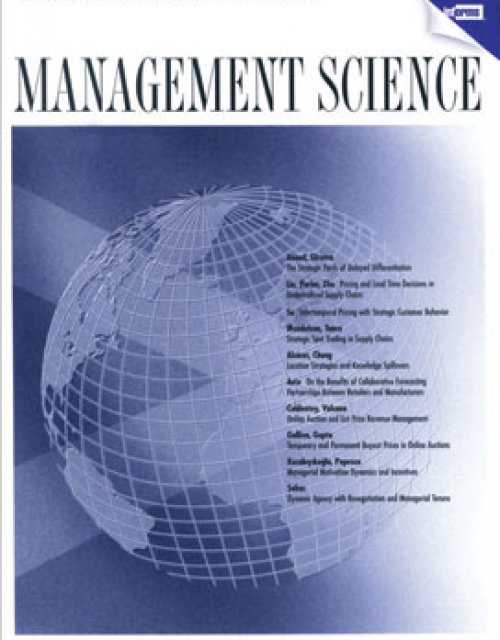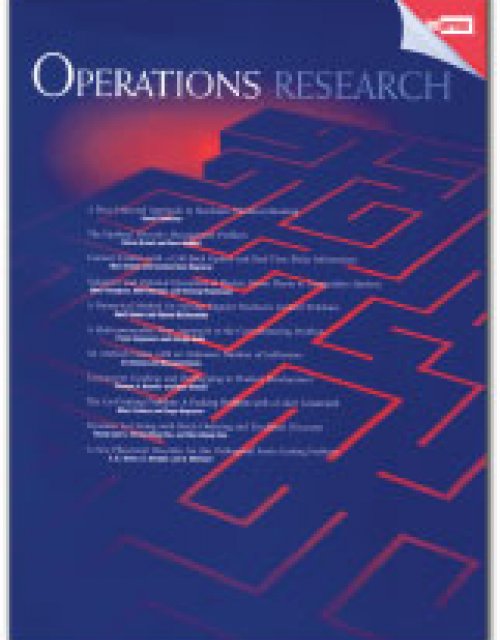Publication records
Subject(s)
Management sciences, decision sciences and quantitative methods
Keyword(s)
Shapley value, potential, random partition, concentration of power, communication graph, fairness, efficiency, efficient extension, fair extension, Myerson value
JEL Code(s)
C71, D60
We study values for TU games with a communication graph (CO-values). In particular, we show that CO-values for connected graphs that are fair and efficient allow for a unique efficient and fair extension to the full domain.
With permission of Elsevier
Volume
146
Journal Pages
103–106
Subject(s)
Human resources management/organizational behavior
Keyword(s)
Crowdsourcing science, replication, reproducibility, research transparency, methodology, meta-science
This crowdsourced project introduces a collaborative approach to improving the reproducibility of scientific research, in which findings are replicated in qualified independent laboratories before (rather than after) they are published. Our goal is to establish a non-adversarial replication process with highly informative final results. To illustrate the Pre-Publication Independent Replication (PPIR) approach, 25 research groups conducted replications of all ten moral judgment effects which the last author and his collaborators had “in the pipeline” as of August 2014. Six findings replicated according to all replication criteria, one finding replicated but with a significantly smaller effect size than the original, one finding replicated consistently in the original culture but not outside of it, and two findings failed to find support. In total, 40% of the original findings failed at least one major replication criterion. Potential ways to implement and incentivize pre-publication independent replication on a large scale are discussed.
With permission of Elsevier
Volume
66
Journal Pages
55–67
Subject(s)
Human resources management/organizational behavior
Keyword(s)
Team adaptiveness, patterned team interactions, in-process planning, dynamic situations, simulation
Previous research asserts that teams working in routine situations pass through performance episodes characterized by action and transition phases, while other evidence suggests that certain team behaviors significantly influence team effectiveness during nonroutine situations. We integrate these two areas of research—one focusing on the temporal nature of team episodic performance and the other on interaction patterns and planning in teams—to more fully understand how teams working in dynamic settings successfully transition across routine and nonroutine situations. Using behavioral data collected from airline flight crews working in a flight simulator, we find that different interaction pattern characteristics are related to team performance in routine and nonroutine situations, and that teams engage in more contingency, in-process planning behavior during routine versus nonroutine situations. Moreover, we find that the relationship between this in-process planning and subsequent team adaptiveness is curvilinear (inverted U-shaped). That is, team contingency or in-process planning activity may initially increase team adaptiveness, but too much planning has adverse effects on subsequent performance.
With permission of SAGE Publishing
Volume
41
Journal Pages
491–525
ISSN (Online)
1552-3993
Subject(s)
Human resources management/organizational behavior
Keyword(s)
Multivariate analysis, computational modeling, team diversity, categorization salience, leadership
It is increasingly recognized that team diversity with respect to various social categories (e.g., gender, race) does not automatically result in the cognitive activation of these categories (i.e., categorization salience), and that factors influencing this relationship are important for the effects of diversity. Thus, it is a methodological problem that no measurement technique is available to measure categorization salience in a way that efficiently applies to multiple dimensions of diversity in multiple combinations. Based on insights from artificial intelligence research, we propose a technique to capture the salience of different social categorizations in teams that does not prime the salience of these categories. We illustrate the importance of such measurement by showing how it may be used to distinguish among diversity-blind responses (low categorization salience), multicultural responses (positive responses to categorization salience), and intergroup biased responses (negative responses to categorization salience) in a study of gender and race diversity and the gender by race faultline in 38 manufacturing teams comprising 239 members.
With permission of SAGE Publishing
Volume
19
Journal Pages
433–474
Subject(s)
Management sciences, decision sciences and quantitative methods; Product and operations management
Keyword(s)
Cooperation, competition, supply risk, coalition stability, supplier alliances
We study the alliance formation strategy among suppliers in a framework with one downstream firm and n upstream suppliers. Each supplier faces an exogenous random shock that may result in an order default. Each of them also has access to a recourse fund that can mitigate this risk. The suppliers can share the fund resources within an alliance, but they need to equitably allocate the profits of the alliance among the partners. In this context, suppliers need to decide whether to join larger alliances that have better chances of order fulfillment or smaller ones that may grant them higher profit allocations. We first analytically characterize the exact coalition-proof Nash-stable coalition structures that would arise for symmetric complementary or substitutable suppliers. Our analysis reveals that it is the appeal of default risk mitigation, rather than competition reduction, that motivates cooperation. In general, a riskier and/or less fragmented supply base favors larger alliances, whereas substitutable suppliers and customer demands with lower pass-through rates result in smaller ones. We then characterize the stable coalition structures for an asymmetric supplier base. We establish that grand coalition is more stable when the supplier base is more homogeneous in terms of their risk levels, rather than divided among a few highly risky suppliers and other low-risk ones. Going one step further, our investigation of endogenous recourse fund levels for the suppliers demonstrates how financing costs affect suppliers’ investments in risk-reducing resources and, consequently, their coalition formation strategy. Last, we discuss model generalizations and show that, in general, our insights are quite robust.
© 2016 INFORMS
Volume
62
Journal Pages
1297–1315
Subject(s)
Human resources management/organizational behavior; Management sciences, decision sciences and quantitative methods; Strategy and general management
Keyword(s)
Status, performance feedback theory, decision making, college
rankings, Chivas Regal effect, pricing, signaling
This paper examines the effect of status loss on organizations’ price-setting behavior. We predict, counter to current status theory and aligned with performance feedback theory, that a status decline prompts certain organizations to charge higher prices and that there are two kinds of organizations most prone to make such price increases: those with broad appeal across disconnected types of customers and those whose most strategically similar rivals have charged high prices previously. Using panel data from U.S. News & World Report’s annual rankings of private colleges and universities from 2005 to 2012, we model the effect of drops in rank that take a school below an aspiration level. We find that schools set tuition higher after a sharp decline in rank, particularly those that appeal widely to college applicants and whose rivals are relatively more expensive. This study presents a dynamic conception of status that differs from the prevailing view of status as a stable asset that yields concrete benefits. In contrast to past work that has assumed that organizations passively experience negative effects when their status falls, our results show that organizations actively respond to status loss. Status is a performance related goal for such producers, who may increase prices as they work to recover lost ground after a status decline.
With permission of Sage
Volume
61
Journal Pages
217–253
Subject(s)
Management sciences, decision sciences and quantitative methods
Keyword(s)
Equal division, weighted division values, non-negative player, addition invariance on bi-partitions, nullified solidarity
Volume
80
Journal Pages
649–667
Subject(s)
Economics, politics and business environment
Keyword(s)
Retail competition, externalities, free-riding, vertical restraints, cross-channel shopping, competition law
JEL Code(s)
K21, L42, L81
Volume
4
Journal Pages
42–83
Subject(s)
Management sciences, decision sciences and quantitative methods; Product and operations management
Keyword(s)
Dynamic mechanism design, optimal control, asymmetric information, environmental regulation, voluntary disclosure
This paper studies the design of voluntary disclosure regulations for a firm that faces a stochastic environmental hazard. The occurrence of such a hazard is known only to the firm. The regulator, if finding a hazard, collects a fine and mandates the firm to perform costly remediation that reduces the environmental damage. The regulator may inspect the firm at any time to uncover the hazard. However, because inspections are costly, the regulator also offers a reward to the firm for voluntarily disclosing the hazard. The reward corresponds to either a subsidy or a reduced fine, depending on whether it is positive or negative. Thus, the regulator needs to dynamically determine the reward and inspection policy that minimizes expected societal cost in the long run. We model this problem as a dynamic adverse selection problem with costly state verification in continuous time. Despite the complexity and generality of this setup, we show that the optimal regulation policy follows a very simple cyclic structure, which we fully characterize in closed form. Specifically, the regulator runs scheduled inspections periodically. After each inspection, the reward level decreases over time until a subsequent inspection takes place. If a hazard is not revealed, the reward level is reset to a high level, restarting the cycle. In contrast to the reward level, the mandated remediation level is constant over time. Nonetheless, when subsidies are not allowed in the industry, we show that the regulator should dynamically adjust this remediation level, which then acts as a substitute for a subsidy. Our analysis further reveals that optimal inspection frequency increases not only when the inspection accuracy decreases, but also when the penalty for not disclosing the hazard increases.
© 2016 INFORMS
Volume
64
Journal Pages
371–389
Subject(s)
Economics, politics and business environment
Keyword(s)
Labor contracts, incentives, behavioral economics, plantations
JEL Code(s)
D82, D86, J33, J41, J43, O13, Q12
We study a contract change for tea pluckers on an Indian plantation, with a higher government-stipulated baseline wage. Incentive piece rates were lowered or kept unchanged. Yet, in the following month, output increased by 20 to 80 percent. This response contradicts the standard model and several variants, is only partly explicable by greater supervision, and appears to be "behavioral." But in subsequent months, the increase is comprehensively reversed. Though not an unequivocal indictment of "behavioral" models, these findings suggest that nonstandard responses may be ephemeral, and should ideally be tracked over an extended period of time.
Copyright © 2016 by the American Economic Association.
Volume
106
Journal Pages
316–358



